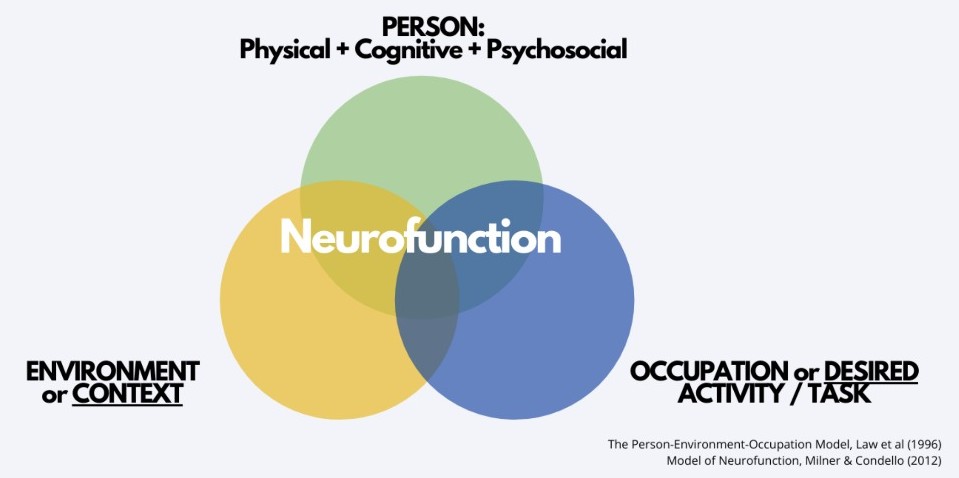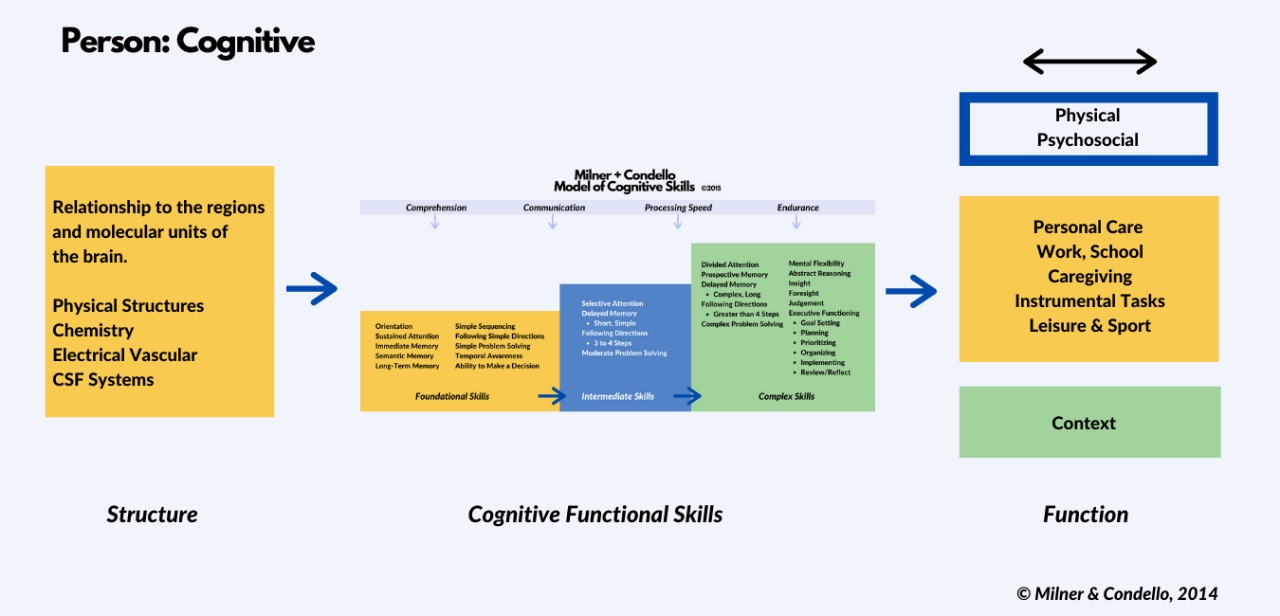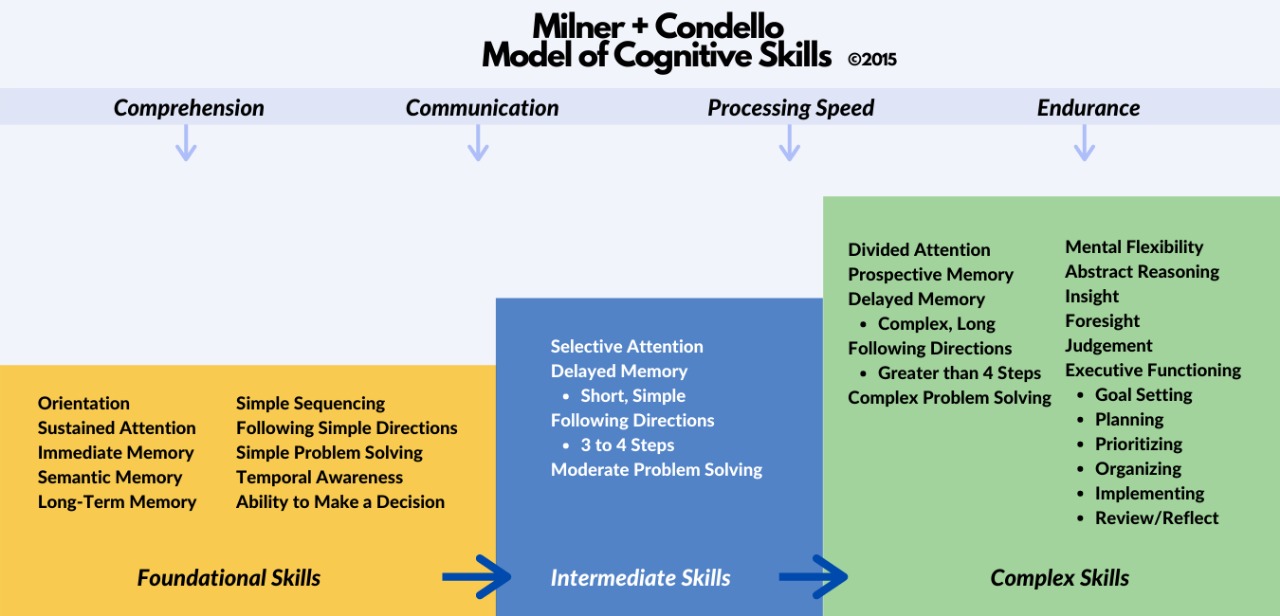What is Neurofunction?
Neurofunction is a comprehensive understanding of a person’s functional status as related to his/her neurological condition; whether healthy or dysfunctional. Neurofunction includes a person’s abilities (physical, cognitive, psychosocial), activity participation, as well as quality of life.





